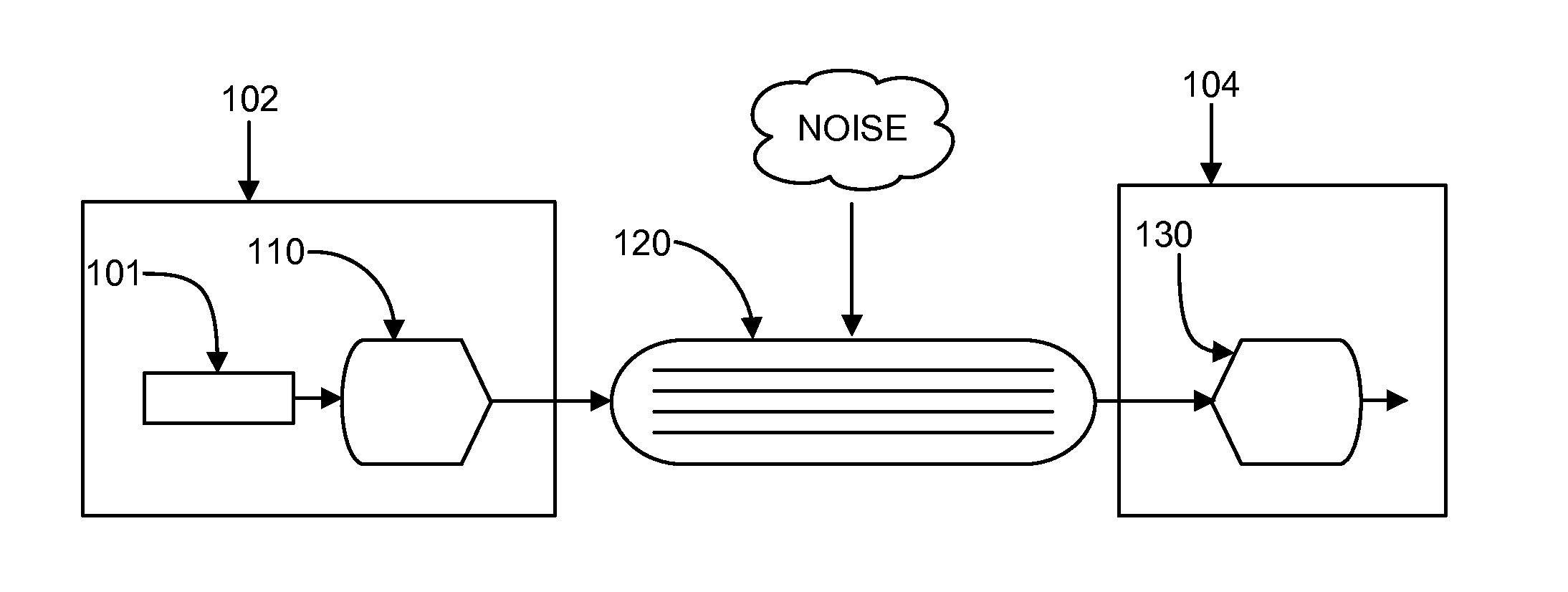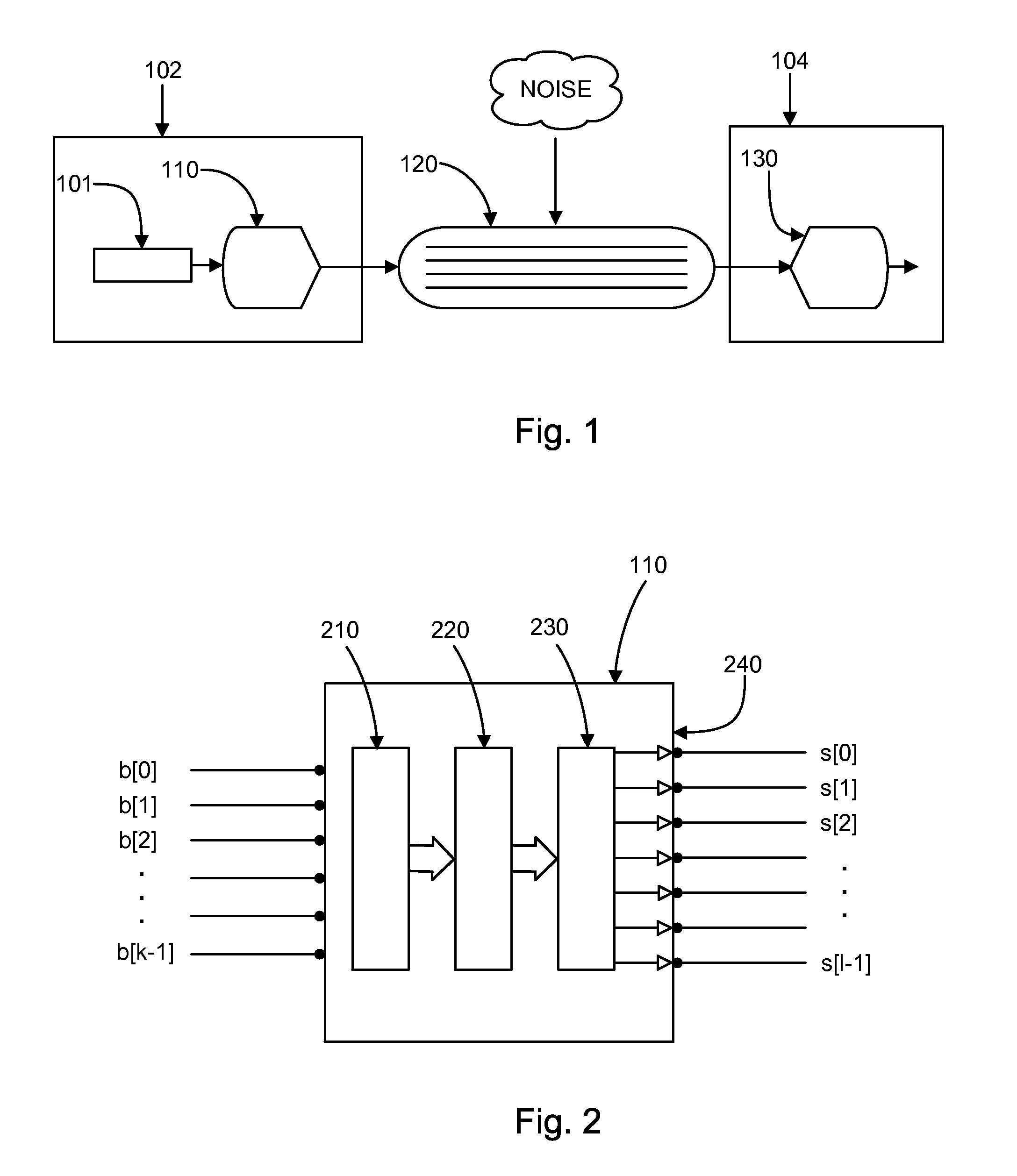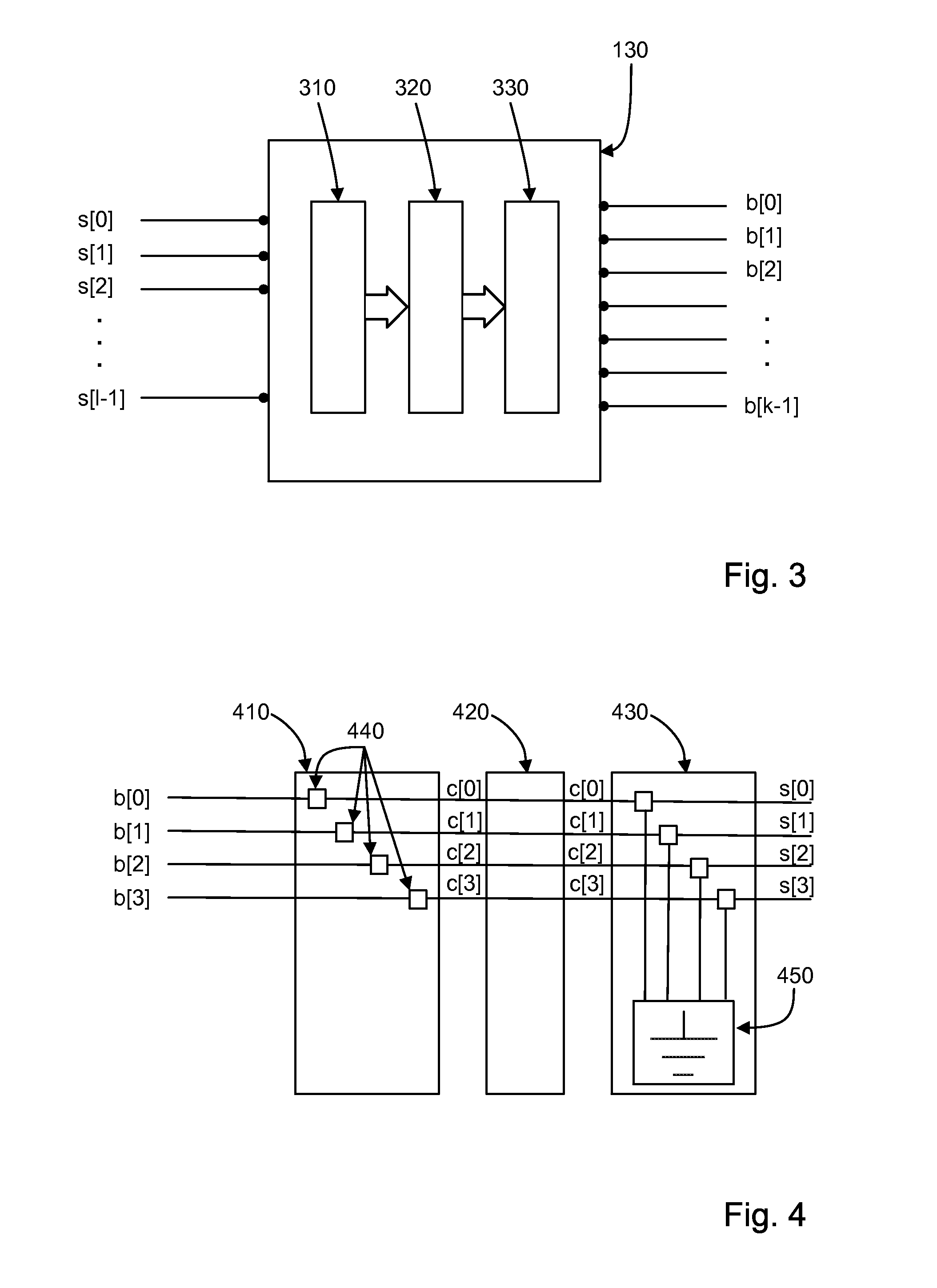Error control coding for orthogonal differential vector signaling
a technology of error control and orthogonal differential, applied in the field of communication, can solve problems such as and the inability to control the error control coding of orthogonal differential vector signaling
- Summary
- Abstract
- Description
- Claims
- Application Information
AI Technical Summary
Problems solved by technology
Method used
Image
Examples
Embodiment Construction
[0033]Improved signaling system and methods are described herein. In specific embodiments, bus communications between circuits is provided by a data bus that has a plurality of wires to convey signals, wherein the wires carry some form of electromagnetic energy, such as voltage and / or current over conducting metal or semiconductor material, light waves over fiber optic lines, or the like. A bus driver on one portion of the bus will drive signals that correspond to the information and / or data to be sent, while a corresponding bus driver on another portion of the bus will receive and transform those signals. Unlike conventional bus drivers, such as single-ended signaling and differential signaling, the signaling used by the bus drivers described herein can provide better combinations of pin-efficiency and average power requirements, without requiring complex processing (which can use up more than the power that is saved in the first place).
[0034]More specific embodiments are described...
PUM
 Login to View More
Login to View More Abstract
Description
Claims
Application Information
 Login to View More
Login to View More - R&D
- Intellectual Property
- Life Sciences
- Materials
- Tech Scout
- Unparalleled Data Quality
- Higher Quality Content
- 60% Fewer Hallucinations
Browse by: Latest US Patents, China's latest patents, Technical Efficacy Thesaurus, Application Domain, Technology Topic, Popular Technical Reports.
© 2025 PatSnap. All rights reserved.Legal|Privacy policy|Modern Slavery Act Transparency Statement|Sitemap|About US| Contact US: help@patsnap.com



